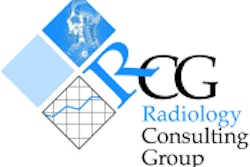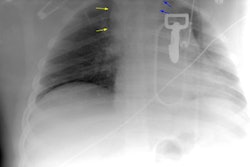CHICAGO – Incorporating computer-aided detection (CAD) into mammography can prove invaluable to a resident with limited experience in breast cancer detection. At Necker Hospital in Paris, France, Dr. Corinne Balleyguier and colleagues evaluated how a radiologist’s experience level was affected by the use of CAD.
"Learning mammography is difficult for residents and junior radiologists because of the lack of experience in detecting subtle abnormalities," said Balleyguier in a presentation at the RSNA meeting on Wednesday. The study sample consisted of 110 mammograms: 97 with normal or benign results; 13 with biopsy-proven cancer. These cases were randomly extracted from a screening program.
The images were examined by one junior radiologist with six months of mammography training, and one senior radiologist with eight years experience who reads about 2,500 mammograms a year.
The Second Look CAD system (CADx Medical Systems, Montreal, Canada) was used. This system marked suspicious breast masses with a circle and microcalcifications with a square. Analysis by both radiologists was standardized according to BI-RADS classification.
"In order to simulate the daily practice, the number of cancers was limited to a cancer prevalence of 11.8% in these cases," Balleyguier said. The mean size of the cancers was 8 mm. Cancers that were considered positive were categorized BI-RADS 3-4, while negative mammograms were classified as BI-RADS 1-2.
For the senior radiologist, CAD improved sensitivity from 76.9% to 84.6% for cancer detection, Balleyguier reported. The CAD system pinpointed one cluster of microcalcifications that the radiologist had overlooked. Negative predictive value also increased from 94.5% to 97.8%.
For the resident, sensitivity jumped from 61.9% to 84.6%. The CAD found three cancers the junior radiologist had missed. The specificity did not change much, from 95% without CAD to 94.8% with CAD. The negative predictive value improved from 94.8% to 97.5% with CAD.
"The diagnostic accuracy of the junior radiologist with CAD reached the level of the senior radiologist," Balleyguier said. "We hope CAD might become an educational tool from mammography."
By Shalmali Pal
AuntMinnie.com staff writer
November 29, 2001
For the rest of our coverage of the 2001 RSNA meeting, go to our RADCast@RSNA 2001.
Copyright © 2001 AuntMinnie.com



















